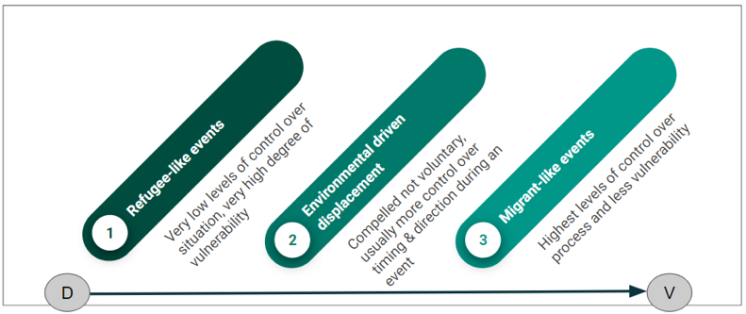Extreme Weather Events And Population Movement In The Era Of Climate Change

June 21, 2018
PGRG Blog #10
Lisa Thalheimer
Extreme weather and migratory events have been topics of great interest for decades. In recent years, extreme weather events such as droughts or floods often result in widespread displacement. The 2011 drought in East Africa – a region, which has historically been using migration as coping strategy for the effects of climatic extremes – has thus far been one of the most severe natural disasters. The event has triggered large-scale displacement along with a humanitarian crisis across Somalia, Kenya and Ethiopia, and prompted a major international response.
Just after tropical cyclone Hurricane Harvey in 2017, the public has raised the question: What role did climate change play? The scientific community often debates this role. Event attribution studies approach the question through calculating how far climate change has altered the probability, frequency and intensity of a natural disaster (e.g. van Oldenborgh et al., 2017). The effects of natural disaster events, which are by definition infrequent and location-specific, on population movements in climate hotspots, regions already vulnerable to current or future climate impacts, is subject to current scholarly investigation (e.g. Davis et al., 2018). Looking closer at the extreme weather event-mobility nexus, it is noteworthy to elaborate on the terminology itself. The phenomenon of environmentally driven migration is a description of population movements for reasons related to natural disasters and complex changes within the environment. Building on the work of Ravenstein’s Laws of Migration in the 19th century, research has evolved via a mono-causal environmental push-pull framework to multi-causal concepts, accounting for the spatial and temporal continuum of different types of mobility (fig 1).
Figure 1: Spectrum of population movements along the displacement to voluntary mobility axis.

To help us understand the role of environmental changes as drivers of mobility or immobility, the mainstay of research projects have employed a case-by-case study approach. Despite research results often being inconclusive on the scientific link between climate change and human mobility, case studies have significantly contributed to structure this emerging, interdisciplinary field of geography.
Even though it is widely accepted that environmental migration results from complex, intertwined drivers of environmental and non-environmental parameters, there has not yet been a rigorous approach on disentangling and quantifying this complexity. The question on the role of climate change yet remains unanswered.
Figure 2: Simplified illustration of the knowledge gap between population movements and extreme weather events

With natural disasters such as Hurricane Harvey and this year’s floods in Kenya, attribution studies have gained in momentum. Attribution science is a young, rapidly developing field within climate science. Based on the principle idea of Allen, attribution studies allow a quantitative connection of extreme weather events and anthropogenic climate change. Geographically and climatologically diverse case studies help to systematically collect knowledge, and quantitatively analyse the role of climate change. This is done by assessing if and by how much past greenhouse gas emissions have contributed to the likelihood of any particular extreme event changing – either becoming more or less likely.
Adding the component of environmental migration to the concept of event attribution could help bridging the knowledge gap highlighted above and examine the role of climate change.
Lisa Thalheimer
University of Oxford
Lisa Thalheimer is a doctoral candidate at the Environmental Change Institute at the University of Oxford, supervised by Dr Friederike Otto. Her research focuses on the attribution of human mobility and extreme weather events in the context of climate change. She presented a case study of her on-going research in East Africa at this year’s RGS-IBG Postgraduate Forum Mid-Term Conference at Royal Holloway, University of London, April 18th-20th 2018. The author is grateful for the generous bursary from the RGS-IBG Population Geography Research Group to attend the conference.
